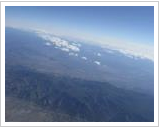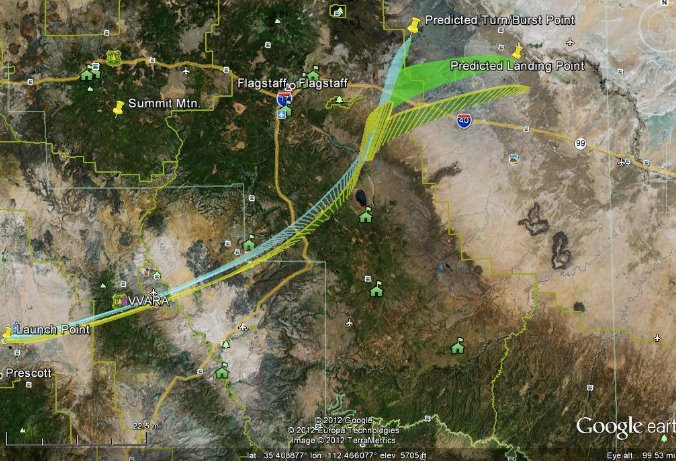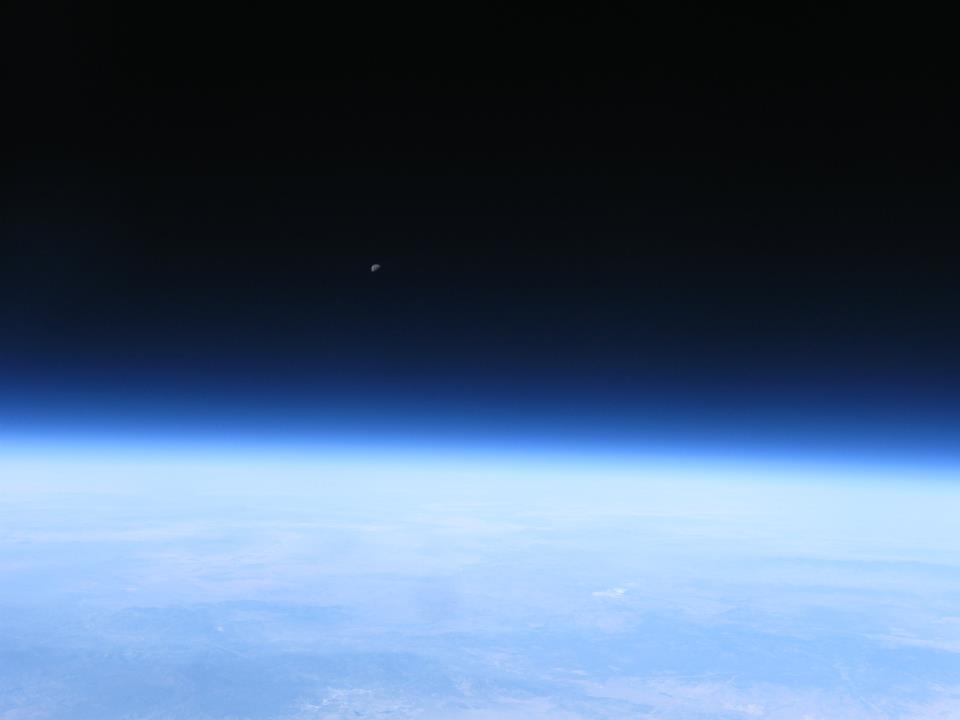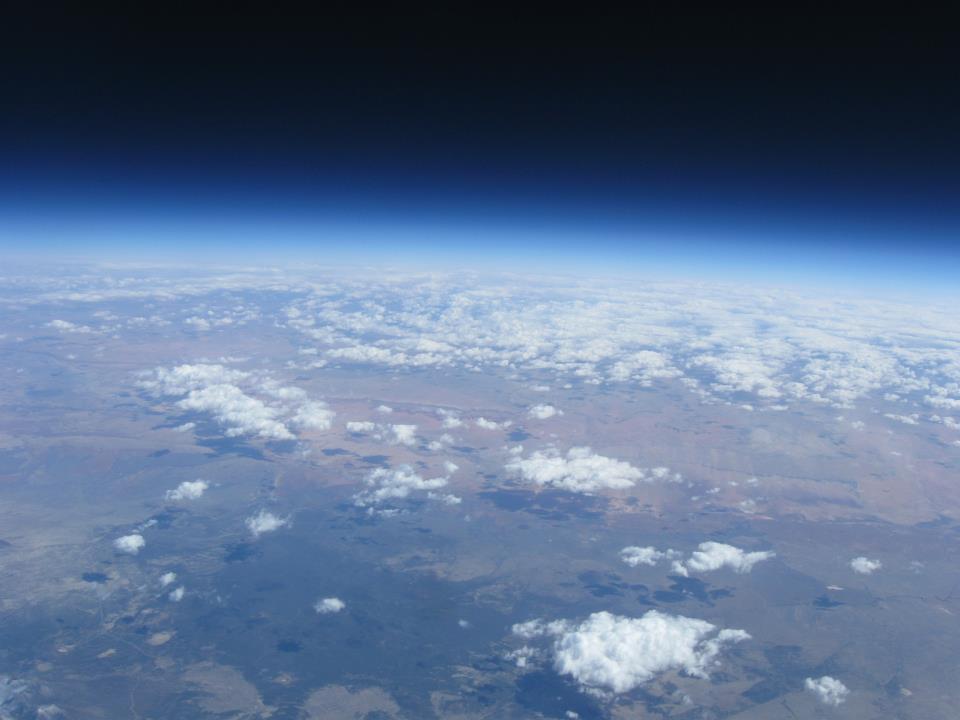Hey, NASA Explorer Schools teachers! NES educator Kaci Pilcher Heins has a great way to get students involved with STEM — high-altitude ballooning! She says, “Usually each state has a ballooning organization and is very willing to get students involved. We are heading to Embry Riddle Aeronautical University in Prescott tomorrow (April 12, 2012) to launch our payload of temperature sensor, pressure sensor, camera, and sensitive film to try and capture gamma rays on board a high-altitude balloon. This is also a great opportunity for my sixth-graders to talk with university students as we tour the campus.” Pilcher Heins reports that they are also using amateur radio with the repeater on the balloon.
Here is a picture of the predicted flight path (prepared prior to the flight)
Here are two pictures of Earth taken during the high-altitude balloon flight on April 12
Directly related to this activity is the NES featured lesson, Engineering Design: Forces and Motion — Balloon Aerodynamics.
And be sure to make a note in your calendar — on May 2, “NASA Now: Balloon Research” comes to the NES Virtual Campus.


 NES educator Kaci Pilcher Heins has a great way to get students involved with STEM — high-altitude ballooning! She says, “Usually each state has a ballooning organization and is very willing to get students involved. We are heading to Embry Riddle Aeronautical University in Prescott tomorrow (April 12, 2012) to launch our payload of temperature sensor, pressure sensor, camera, and sensitive film to try and capture gamma rays on board a high-altitude balloon. This is also a great opportunity for my sixth-graders to talk with university students as we tour the campus.” Pilcher Heins reports that they are also using amateur radio with the repeater on the balloon.
NES educator Kaci Pilcher Heins has a great way to get students involved with STEM — high-altitude ballooning! She says, “Usually each state has a ballooning organization and is very willing to get students involved. We are heading to Embry Riddle Aeronautical University in Prescott tomorrow (April 12, 2012) to launch our payload of temperature sensor, pressure sensor, camera, and sensitive film to try and capture gamma rays on board a high-altitude balloon. This is also a great opportunity for my sixth-graders to talk with university students as we tour the campus.” Pilcher Heins reports that they are also using amateur radio with the repeater on the balloon. Last month, when the sun unleashed the most intense radiation storm since 2003, peppering satellites with charged particles and igniting strong auroras around both poles, a group of high school students in Bishop, Calif., knew just what to do.They launched a rubber chicken.The students inflated a helium balloon and used it to send the fowl, named “Camilla,” to an altitude of 36.6 km, or 120,000 ft, where it was exposed to high-energy solar protons at point blank range.
Last month, when the sun unleashed the most intense radiation storm since 2003, peppering satellites with charged particles and igniting strong auroras around both poles, a group of high school students in Bishop, Calif., knew just what to do.They launched a rubber chicken.The students inflated a helium balloon and used it to send the fowl, named “Camilla,” to an altitude of 36.6 km, or 120,000 ft, where it was exposed to high-energy solar protons at point blank range.


 Dr. Norman W. Schaeffler, a NASA aerospace research engineer, describes how wind tunnels work and how aircraft designers use them to understand aerodynamic forces.
Dr. Norman W. Schaeffler, a NASA aerospace research engineer, describes how wind tunnels work and how aircraft designers use them to understand aerodynamic forces.